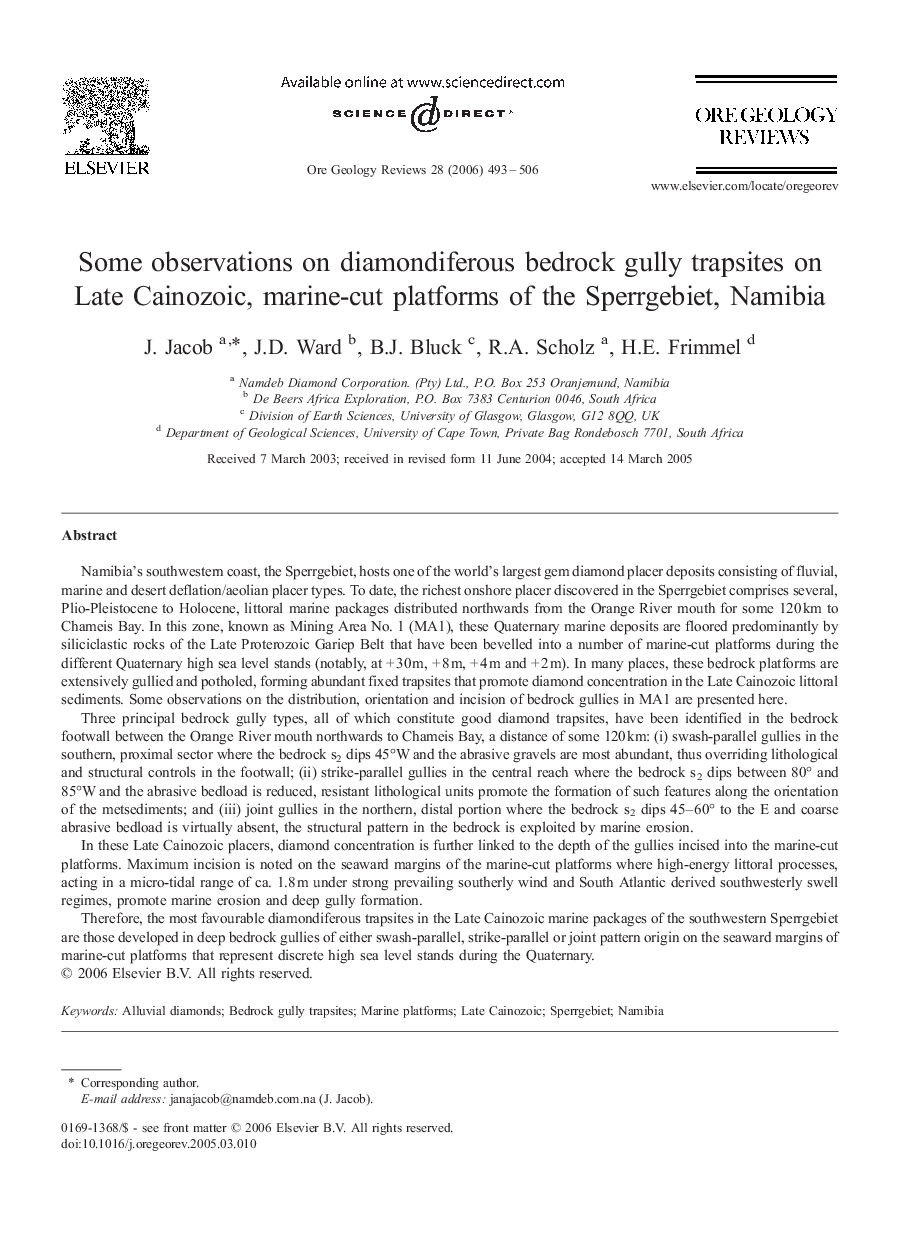| کد مقاله | کد نشریه | سال انتشار | مقاله انگلیسی | نسخه تمام متن |
|---|---|---|---|---|
| 4698101 | 1351927 | 2006 | 14 صفحه PDF | دانلود رایگان |

Namibia's southwestern coast, the Sperrgebiet, hosts one of the world's largest gem diamond placer deposits consisting of fluvial, marine and desert deflation/aeolian placer types. To date, the richest onshore placer discovered in the Sperrgebiet comprises several, Plio-Pleistocene to Holocene, littoral marine packages distributed northwards from the Orange River mouth for some 120 km to Chameis Bay. In this zone, known as Mining Area No. 1 (MA1), these Quaternary marine deposits are floored predominantly by siliciclastic rocks of the Late Proterozoic Gariep Belt that have been bevelled into a number of marine-cut platforms during the different Quaternary high sea level stands (notably, at + 30 m, + 8 m, + 4 m and + 2 m). In many places, these bedrock platforms are extensively gullied and potholed, forming abundant fixed trapsites that promote diamond concentration in the Late Cainozoic littoral sediments. Some observations on the distribution, orientation and incision of bedrock gullies in MA1 are presented here.Three principal bedrock gully types, all of which constitute good diamond trapsites, have been identified in the bedrock footwall between the Orange River mouth northwards to Chameis Bay, a distance of some 120 km: (i) swash-parallel gullies in the southern, proximal sector where the bedrock s2 dips 45°W and the abrasive gravels are most abundant, thus overriding lithological and structural controls in the footwall; (ii) strike-parallel gullies in the central reach where the bedrock s2 dips between 80° and 85°W and the abrasive bedload is reduced, resistant lithological units promote the formation of such features along the orientation of the metsediments; and (iii) joint gullies in the northern, distal portion where the bedrock s2 dips 45–60° to the E and coarse abrasive bedload is virtually absent, the structural pattern in the bedrock is exploited by marine erosion.In these Late Cainozoic placers, diamond concentration is further linked to the depth of the gullies incised into the marine-cut platforms. Maximum incision is noted on the seaward margins of the marine-cut platforms where high-energy littoral processes, acting in a micro-tidal range of ca. 1.8 m under strong prevailing southerly wind and South Atlantic derived southwesterly swell regimes, promote marine erosion and deep gully formation.Therefore, the most favourable diamondiferous trapsites in the Late Cainozoic marine packages of the southwestern Sperrgebiet are those developed in deep bedrock gullies of either swash-parallel, strike-parallel or joint pattern origin on the seaward margins of marine-cut platforms that represent discrete high sea level stands during the Quaternary.
Journal: Ore Geology Reviews - Volume 28, Issue 4, May 2006, Pages 493–506